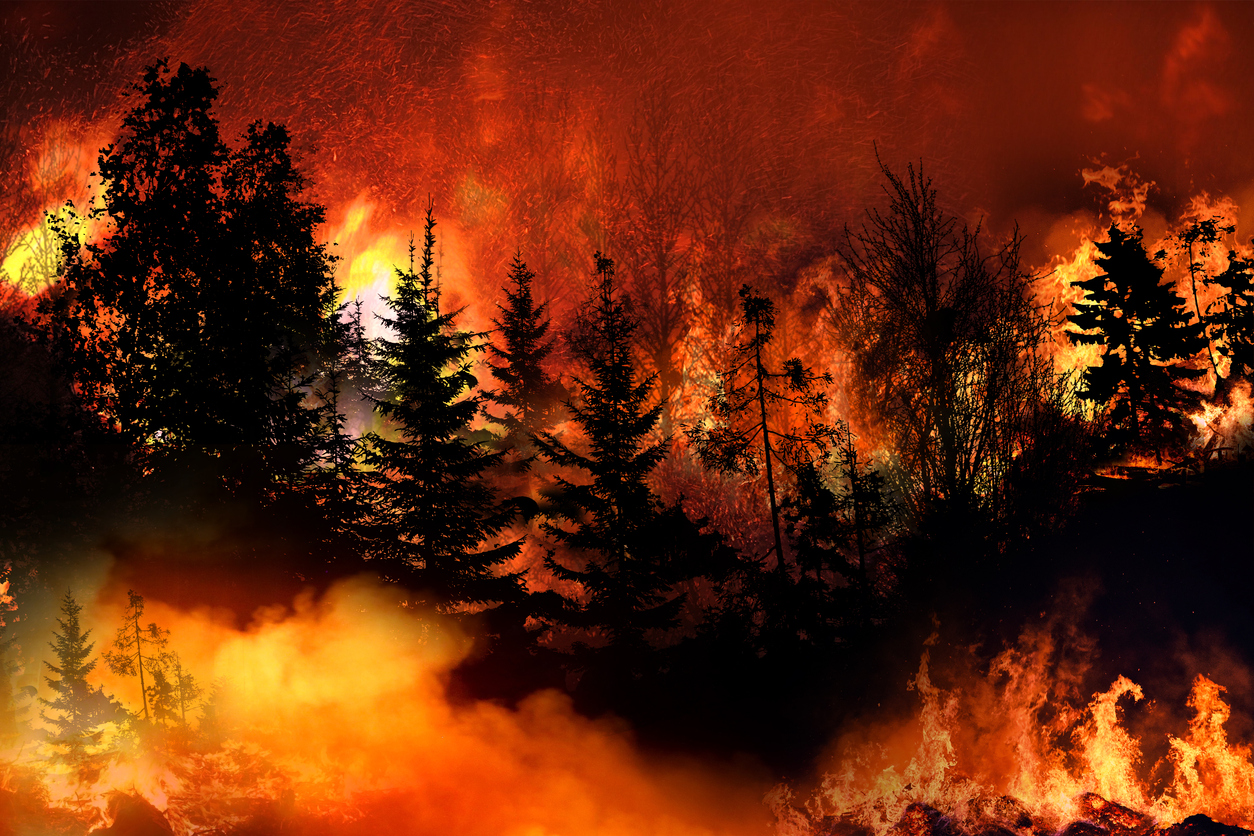How comms leaders can make a difference during natural disasters
When earthquakes, wildfires, hurricanes and tornadoes threaten lives and livelihoods, these steps can set organizations up for survival and success.

Among the impacts of advancing climate change have been an uptick in annual natural disasters, such as the North Carolina tornadoes that recently damaged a Pfizer plant to the Canadian wildfires with plumes have choked the skies of dozens of cities.
This year alone, natural disasters such as these have taken a $194 billion toll on the global economy, straining communities and businesses alike.
It’s not solely on communicators to help employees through a natural disaster such as a hurricane, wildfire, tornado or earthquake — but comms professionals are in the critical position of keeping both employees and business leaders informed, while protecting themselves.
No one wants to have to consider the unthinkable, but when disaster strikes, these steps will help you keep information flowing to the right places at the right time.
Prepare, prepare and overprepare
Not all disasters are created equal when it comes to preparedness.
“Hurricanes and blizzards are predictable,” said Aaron Gordon, partner at Miami-based communications and public affairs firm Schwartz Media Strategies. That is, comms professionals can consult weather resources for some advance warning, allowing you to develop and update a response plan on an annual or seasonal basis.
Other events can come without warning: “Earthquakes, tornadoes, and wildfires are wholly unpredictable,” Gordon said. “Businesses which are vulnerable to unforeseen events must always have contingency plans at the ready, and everyone who has a role in the disaster response must know how and when to activate that plan — and what’s expected of them.”
The U.S. government’s Ready program offers resources to help organizations navigate these moments, including toolkits for common severe natural incidents. Encourage leadership to initiate a business impact analysis (BIA), which helps organizations account and prepare for damage to buildings and equipment, interruptions in supply chain, loss of IT data and systems and extended absences of business-critical employees. Many of these factors will have repercussions for comms employees as they help navigate a path forward after a natural disaster.
Ensure that information is stored in multiple places and easy to find
Comms leaders are on the front lines of information flow during natural disasters.
“Clients, customers, and employees should never be in doubt about how a business has fared, how to contact leadership, and what to do if they need help,” said Gordon.
Externally, that means developing publicly available communications for customers to be posted on websites, sent out to emails and ready for customer service representatives taking calls.
Internally, that means listing information on websites and intranets, preparing emails that can easily be sent in case of emergency and having contact information on file in multiple places. Whether an employee’s impacted home is situated at the center of a natural disaster or the office itself, personnel should be able to find and provide information easily and readily.
Gordon also advises service sector companies to scatter out team members when they have the luxury of doing so.
“In 2017, our communications firm arranged for five team members and their families to temporarily relocate out of South Florida when Hurricane Irma was threatening to impact our area,” he said. “That allowed us to continue serving clients following the storm when large swaths of our region were knocked offline.”
Information redundancy and backups are also mission critical to an organization’s success after a disaster. Ready.gov provides resources for ensuring your organization has what it needs to keep data and systems safe and recoverable.
Balance clarity and empathy
Natural disasters are out of everyone’s control. That can be frightening for the people impacted and frustrating for others who are worried about bottom lines—but ultimately, safety and survival are far more important than productivity and profit.
“Employees need to know that their personal needs come before those of the business,” Gordon said. “This may sound like common sense, but it can be easy to get wrapped up in the needs of the business when scrambling before or after an extreme event.”
Employees also need clear guidance on their immediate next steps, how many days off they have built into preexisting parameters, what time is being extended to accommodate for the situation and more. Legal parameters from the Department of Labor and guidelines from OSHA can help comms professionals understand compliance with employee rights and evacuation protocol in these situations, and prior, company-wide training can help employees proceed with the management of their own affairs while ensuring their jobs are safe.
“The biggest mistake a company can make when preparing for an extreme weather event is confining the planning process and communications among people in senior leadership roles,” said Gordon. “It’s critical that everyone knows their role in the response plan, which creates a framework for setting realistic expectations.”
Gordon recalled the aftermath of Hurricane Irma, when employees were living with relatives and surviving without utilities and internet for weeks. The creation of a storm task force helped the company and clients keep moving and step up after the hurricane.
“Because we had a clear response plan in place, we were able to adapt and stay flexible,” he said. “We coordinated morning calls with our full team and affected clients. Those impacted by the storm contributed as much as they could while others jumped in to assist. To this day, our employees appreciate the steps we took to prioritize their safety and the needs of their families, and our clients value how we stepped in to support their own needs.”
Take care of yourself and your team
Finally, comms and HR professionals are in a position to provide care and support for employees — but remember you also have a life, loved ones and home as well. It’s easy enough for leaders to say “family comes first,” but internal comms pros can be the first to be overlooked because their roles are so critical to operations and employee relations.
Overpreparing can help you see to your own affairs while keeping other employees, clients, leaders and information systems safe when disaster strikes.
Jess Zafarris is a content director, editor, journalist, speaker, social media engagement strategist and creator. Her 13 years of experience in media have included such roles as the Director of Content at Ragan Communications, Audience Engagement Director at Adweek, and Content Strategy Director and Digital Content Director for Writer’s Digest and Script Mag. Follow her on Twitter/Threads/IG and Tiktok @jesszafaris and connect with her on LinkedIn.







